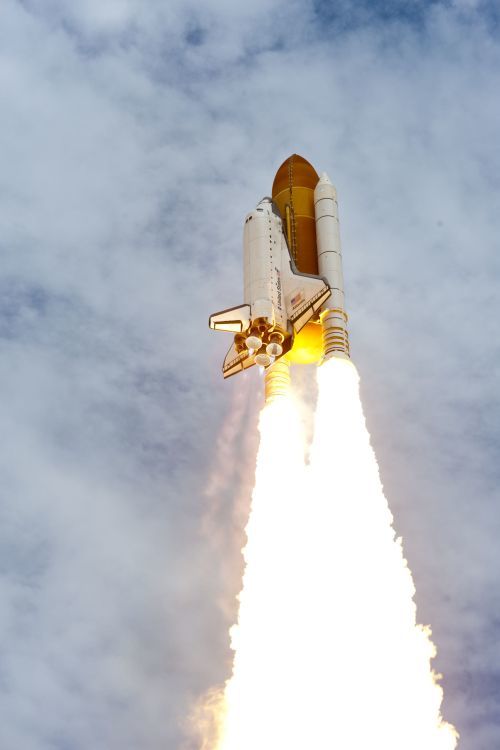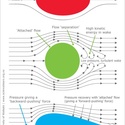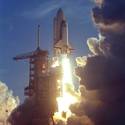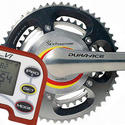What is a rocket pushing against to make it start moving? Is it pushing against the ground? The air? The flames?
To make any object start moving, something needs to push against something else. When you walk, you are pushing against the ground, so the ground pushes back against you to make you start to move. A plane uses its propellers to push air backwards, so the air pushes back against the plane to make it start moving.
In the same way, a rocket needs to push against something. It is pushing against the gases inside it. As these gases are pushed out in one direction, there is a reaction force that pushes the rocket in the other direction. This reaction force is called thrust.
Rocket science on a skateboard
To understand this idea, it is useful to think of two people standing next to each other on skateboards. If one person pushes the other person, each person will be pushed in opposite directions. Both people will move.
If you are on a skateboard by yourself, you could still make yourself move by throwing off a heavy object in one direction. This would push you and the skateboard in the opposite direction. To produce more thrust, you could throw something off your skateboard with more speed.
A rocket works in a very similar way. It throws out tiny bits of mass at high speeds to push the rocket in the opposite direction.
Newton’s third law
Newton’s third law explains how rocket produce thrust – for every force pushing on one object, there is an equal but opposite force pushing on another object.
Another way of saying this is that, for every action, there is an equal and opposite reaction. Forces always come in pairs.
A rocket pushes gases (or liquid) from inside it in one direction, and this pushes the rocket in the opposite direction. If the mass is thrown out at faster speeds, there will be more force pushing the rocket.
Canister rockets, balloon cars and water rockets
A film canister rocket uses a chemical reaction to build up gas pressure inside the canister. When the pressure is high enough, the lid pops off. The gases inside the rocket are pushed downwards so the canister rocket is pushed upwards.
For a balloon-powered toy car, the pressure inside the balloon pushes the gases in one direction, so the toy car is pushed forwards in the opposite direction.
A water rocket has air inside a plastic bottle with some water added. More air is pumped into the bottle to build up the pressure. When the rocket is released, the air pushes the water in one direction, so the bottle rocket is pushed in the other direction.
Rocket engines push against the reacted gases
Rockets that produce lots of flames as they burn their fuel (for example, liquid hydrogen) with an oxidiser (for example, liquid oxygen) are doing a similar thing. They are using a chemical reaction to produce enormous pressures inside a combustion chamber. The reacted fuel particles are then ejected (thrown out) from a narrow hole at one end of the combustion chamber called a throat.
The pressure inside the combustion chamber pushes the gases out of this hole in one direction, and the rocket is pushed in the opposite direction. This same pressure also pushes forwards against the walls on the inside of the combustion chamber. (There is also some pressure pushing forwards against the inside walls of the expansion nozzle as the gases exit.)
This force that pushes a rocket is called thrust.
Related content
Explore further to find out more about what it takes Getting rockets into space.
Read about New Zealand’s first launch of a rocket into space by Rocket Lab.
Find out more about the types of chemical rocket engines – chemical rocket engines are designed to generate thrust by using highly exothermic (heat-producing) chemical reactions. Solid, liquid or hybrid propellants are used.
Activity idea
Explore the ideas of force and thrust further in the Rocket launch challenge activity. Your challenge is to make the rocket go as high as possible and launch a payload 400 km above the ground.
Useful links
Find out more about model rockets and suppliers in New Zealand here.






